Vishnu Stambha, Mehrauli, Delhi
The original name of Qutub Minar is Vishnu Pillar which was not built by the invader Qutubuddin but by another astronomer Varahamihira, one of the Navaratnas of Emperor Chandragupta Vikramaditya. The settlement near Vishnu pillar is called Mehrauli. It is a Sanskrit word derived from the word Mihir and it is named after the astronomer Varahamihira where he lived. He was accompanied by his assistants, mathematicians and technicians and used this Vishnu pillar for astronomical calculations, studies.
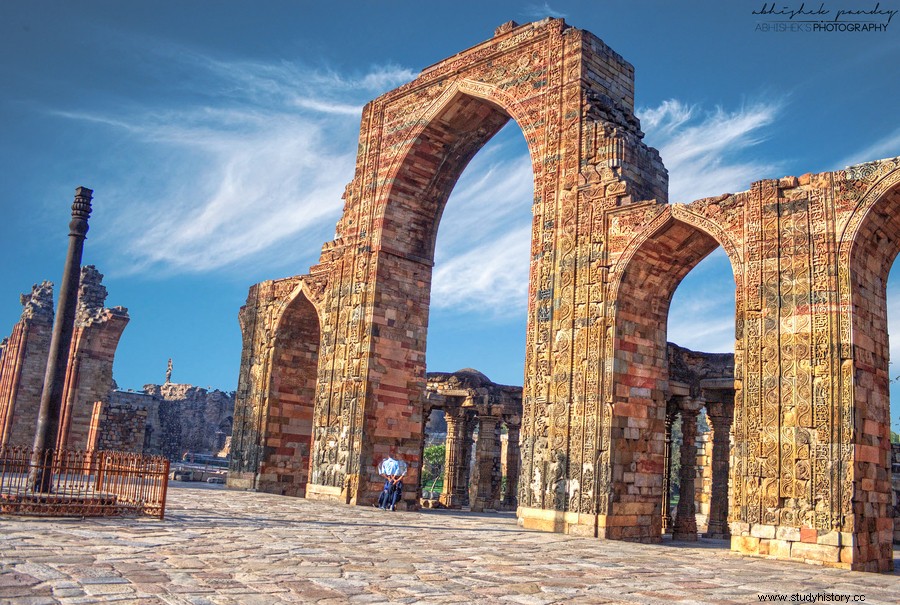
Around this pillar were mandapas or domed buildings for the 27 constellations or constellations dedicated to the Hindu zodiac. It is mentioned in some history books that Qutubuddin destroyed all these pavilions or dome buildings, but it is not written in it that he built any minaret. The credit for the construction was given to Ghulam Qutubuddin of the invader Ghori under the same conspiracy as the construction of other Hindu buildings has been credited to the Muslims i.e. by the sycophantic later Muslim writers. The Muslim invaders used to change the appearance only by vandalizing the Hindu temples, monasteries, buildings that were acquired. They used to remove the top cover of Hindu buildings and paste other stones written in Arabic on it.
Archaeological evidence of Hindu building

The carvings of temple bells and sculptures carved on the pillars and walls can still be seen in the Qutub Minar complex, hundreds of pillars of the temple built from Hindu architecture can still be seen in the Qutub Minar complex. In an attempt to remove the idols from these pillars, the damaged parts can also be clearly seen. The government has covered the Ganesh idol carved in the premises with an iron net so that the tradition of worship cannot be started again here. The entrance to this tower is in the north, not in the west, while the west is important in Islamic theology and tradition. Nearby it is written in Sanskrit in Brahmi script on the non-rusting iron pillar that this pillar of Vishnu was built on a hill called Vishnupad Giri.
Historical evidence of Hindu building
Historian Purushottam Nagesh Oak writes, “The so-called Qutub Minar and Alai Darwaza, the Alai Masjid are actually part of the Vishnu temple complex. The Alai Masjid is actually the ruins of the Vishnu temple which was destroyed by the Muslim invaders. Here there was a huge idol of Lord Vishnu sitting on the bed. Qutub Minar which is actually Vishnu Stambha or Dhruva Stambha was situated in the middle of a lake which was a symbol of Kamalnabha. Brahma ji was seated on the lotus flower above the pillar, which was destroyed by the Muslim invaders. A pool-like path was made to go from the temple to the pillar”.

British surveyor Joseph Begler wrote in his report on page 46 that the Arabic traveler Ibn Battuta called this entire complex a temple complex.
Historian Purushottam Nagesh Oak writes that the founder of Aligarh Muslim University, Syed Ahmed Khan, also considered the Qutub Minar and its entire complex to be a Hindu construction.
You can clearly read on the information board near Qutub Minar which mentions the demolition of 27 Hindu-Jain temples here. According to the information preserved in the British Museum, till 1900 it was known as "Raja Prithviraj Temple".
Evidence of Hindu campus in British government surveyors report

British surveyor Joseph Begler, in his survey report, has not only declared the entire Qutub Minar complex as a Hindu building but has also proved it, but the Archaeological Survey of India and the leftist historians have forcibly declared it as a Muslim. Joseph Begler's report Archaeological Survey of India; Report for the Year 1871-72 Delhi, Agra, Volume 4, by J. D. Beglar and A. C. L. Carlleyle is available in the book. Joseph Begler writes on page 27 of this report;

Joseph Begler's report on page 58 of the above book of the Archaeological Survey of India declares this complex to be very ancient even from the Gupta period on the basis of various inscriptions on the Qutub Minar.

Joseph Begler has written in his report on page 30 that two idols of Goddess Lakshmi were found in excavations from the Qutub Minar complex. Historian Purushottam Nagesh Oak has also written that during the reign of Indira Gandhi, when the Archaeological Survey of India began to find idols of deities in the excavation of the Qutub Minar complex, to protect them from the eyes of the people, a high tripal was put around there so that no one could see. Could not The people around there told that in the dark of night the idols were taken from there and kept somewhere else.

Joseph Begler has explained in detail on page 31 of his report why the entire complex including the so-called Qutub Minar is a Hindu temple complex.
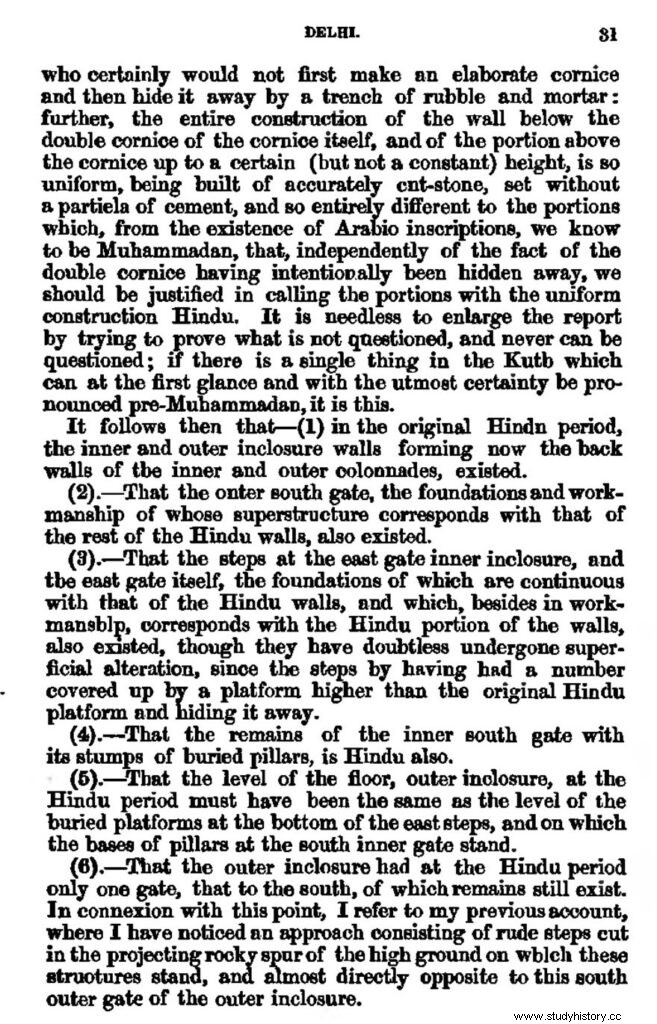
On page 37 of the report, Beglar proves the entire Qutub Minar to be a Hindu pillar;
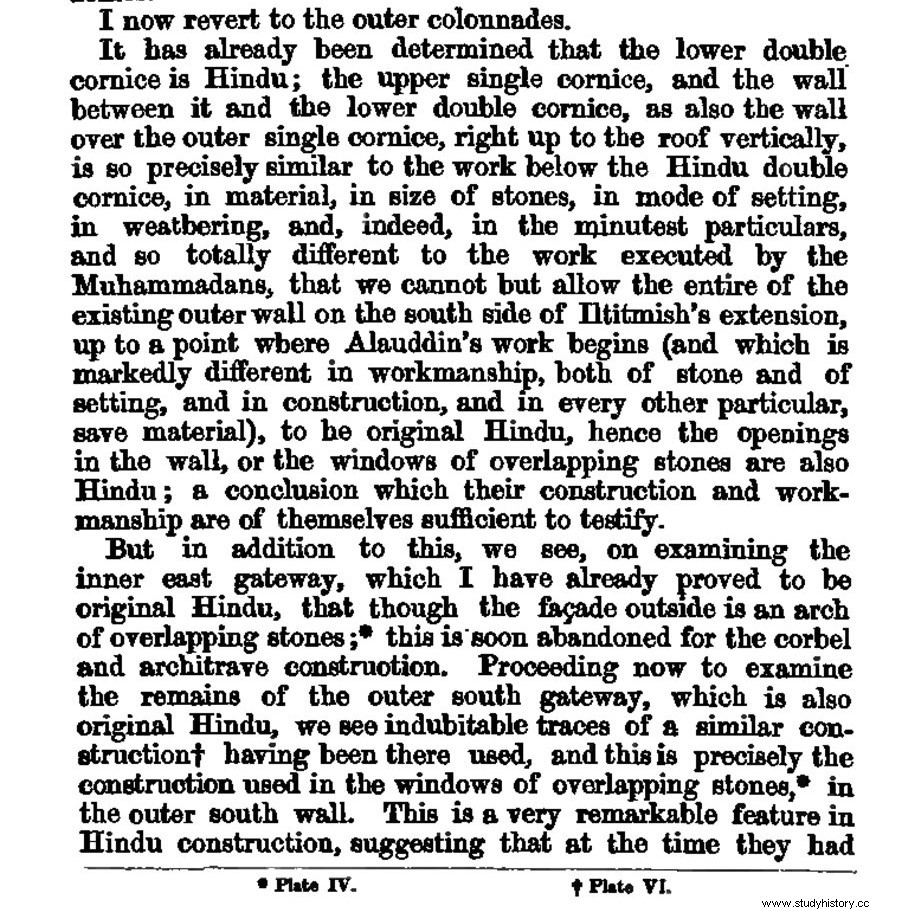
On page 38 of his report, Joseph Begler declares the entire Qutub Minar to be Hindu-built;

On page 51 of the report, Begler proves that the bell, lotus and triangle designs on the minaret are built on the original stone, while the Arabic writings were cut from the original stone at the same depth;
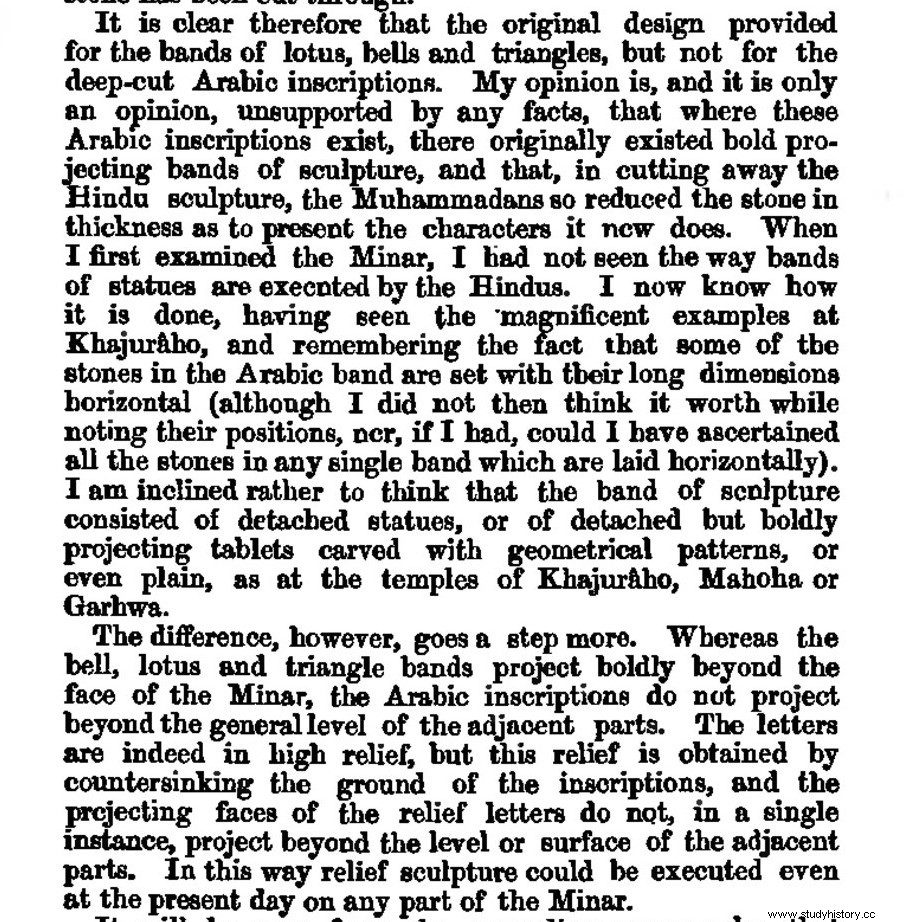
Joseph Begler, on page 45 of his report, claims a large central temple building in the so-called Qutub Minar complex that was destroyed by Qutubuddin's Muslim invaders. On page 46 details of 27 temples are given.
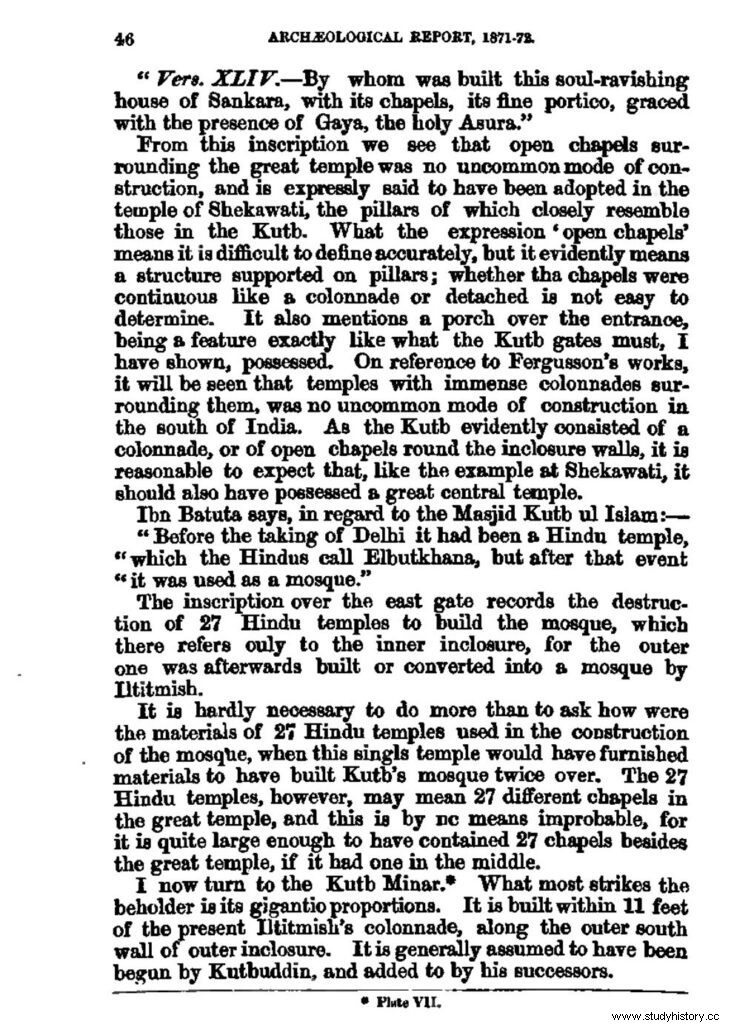
Joseph Begler has proved on page 47 of the report that Qutub Minar was built along with the temple and it was not possible to build it separately there.

Begler on page 48 says that there is no reason to believe the minaret to be Muslim built and the whole mystery is easily solved by considering it as a Hindu building

The above evidence is enough to prove the lies and deceit of the Archaeological Survey of India and the leftist historians and to tell the Indians that Qutub Minar is not a Vishnu pillar built by an invading Muslim but the great ancestor of all of us Indians. The invaders had destroyed and destroyed 27 temples of that holy site and converted some into mosques. Therefore, after today all Indians call it Vishnu Stambha built by the great astronomer Varahamihira under the rule of Chandragupta Vikramaditya.
